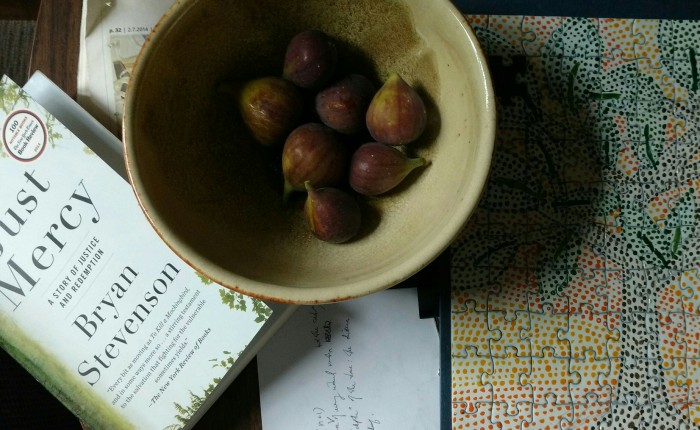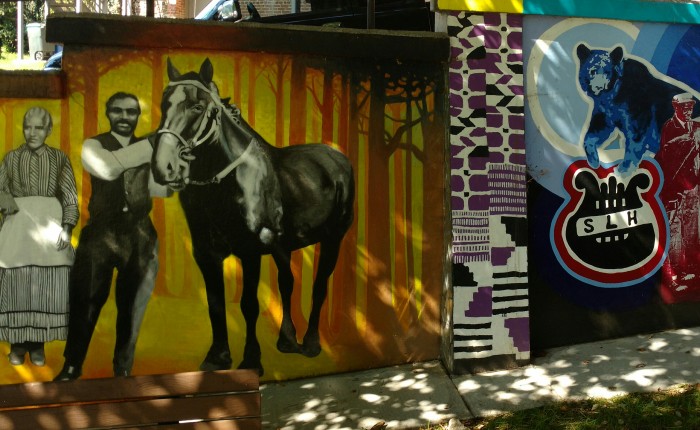…a bunch more to go. The semester’s off to a good start, I think. There’ve not yet been any fireworks in either order theory or voting theory, but as we tread closer to Duverger’s Law and Arrow’s Theorem, the latter will likely light up, and the students begin presenting solutions to problems in the former, so there’ll be some excitement there, too.
My order theory class hit a little bump when I realized that a couple of the students in the class have not taken our intro to proofs course; though I’d advertised MATH 280 as a prereq, I don’t think I listed 280 as a formal prerequisite, so a few folks signed up for more than they might be able to handle.
Meanwhile, today in voting theory we examined paradoxical electoral outcomes, outcomes in which the will of the people (as expressed by individual voter preferences) is clearly misaggregated into a “flawed” social preference as determined by the electoral process. (The featured image above shows the students’ successful attempt at “breaking” the “count the A-grades” electoral system mentioned by Donald Saari on page 20 of his book Chaotic Elections!.) Having spent the first two classes designing their own electoral systems and running mock elections according to those systems, their next task is to “break” one another’s systems by showing that paradoxical outcomes are possible no matter the choice of system.
I think the most exciting goings-on this past week came outside of class:
- I’ve met (in several different settings) Sidney, the new director of our service-learning center. He seems authentic, engaged, down-to-earth, and appreciative of our campus culture surrounding service-learning and community engagement. I think I’ll enjoy working with him. He and Tish, the woman who’s been tapped to oversee several programs that deal with the university’s engagement with the community, invited me to join them at a two-day Campus Compact “action planning” institute coming up in a few weeks in Princeton, NJ. Should be fun!
- I’ve been in correspondence with the heritage preservation officer for the Lewis and Clark County Historical Society regarding the phenomenon of urban renewal in Helena, Montana, my hometown. After revisiting a wesbite I discovered when looking at urban renewal in Helena the first time I taught Cultivating Global Citizenship, and after spending a few hours working on a poem about the old Chinese masonic temple that once stood in Helena (in the 1870s, Helena’s population was roughly 1/5 Chinese!), I contacted Queshia, asking for more information on an exhibit I’d seen referenced a few times in the literature I was able to find online. She responded very quickly and excitedly, sending me several large files full of digitized documents that relate to that exhibit. I’ve yet to look them over, but I hope to have some good time to do so this weekend!
- Relatedly, I’ve begun talking with a few folks (including Candace and Doreen) about teaching a course on urban renewal here at UNCA…maybe team-teaching with someone who has more of an idea of what they’re talking about…? I know some folks in History and PoliSci who’d be all upons. Meanwhile, Candace’s current first-year writing class is based on the theme “deconstructing Asheville”: she’s asking her students to critically examine Asheville’s national reputation as a tourist mecca, a foodtopia, a thriving arts and crafts community, a jade-green jewel of an outdoors community where everyone drinks good beer and poops out sweet-smelling shit. While the haves are quaffing craft brews from the comfort of their kayaks, Asheville’s working-class community is struggling to get by in a sprawling food desert plagued by tremendous income inequality and inadequate affordable housing. Just today we’ve begun thinking about linking her first-year writing course with a first-year seminar on urban renewal…could we make that work…?
- In administrative news…I presented the idea of moving toward a letter-grade-free curriculum in the Honors Program to the members of the Honors Program Advisory Committee. There was tentative support from some and tentative resistance from others…just as to be expected, I think. I’ve only just begun to think about this move, and I’m sure the coming weeks will see much more work on that project. The advisory committee unanimously signed off on a proposed alternative recognition for Honors students who cannot meet the somewhat stringent requirements for Distinction as a University Scholar, the greatest recognition we grant for participation in our program. Many transfer students simply cannot complete the 21 hours of Honors coursework required of them before graduating, and I want to do all that I can to encourage greater involvement of such students in the program. “Recognition as an Honors Scholar” will require the student to complete only 12 hours in the program, and I hope this honor will encourage more transfer students (and others!) to apply for and take part in the program.
I could go on and on (it’s been a busy week!)…about my school’s move to require all new lecturers to teach 16 hours per term (instead of the usual 12)…about last night’s very well-attended reception for first-year Honors students…about the fact that roughly 90% of that group of students is female (an even more uneven distribution than usual)…about the wonderful work my Student Honors Advisory Committee is doing in mentoring first-year students and putting together outstanding social and academic programming…but I’ll leave it there.
Much more to come!






